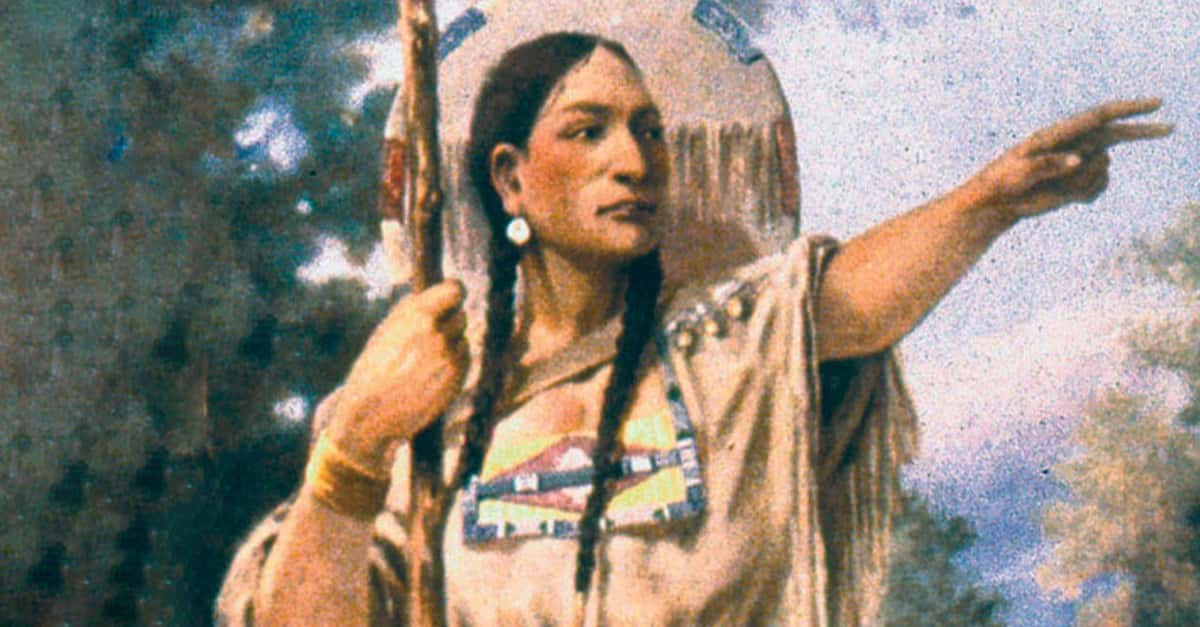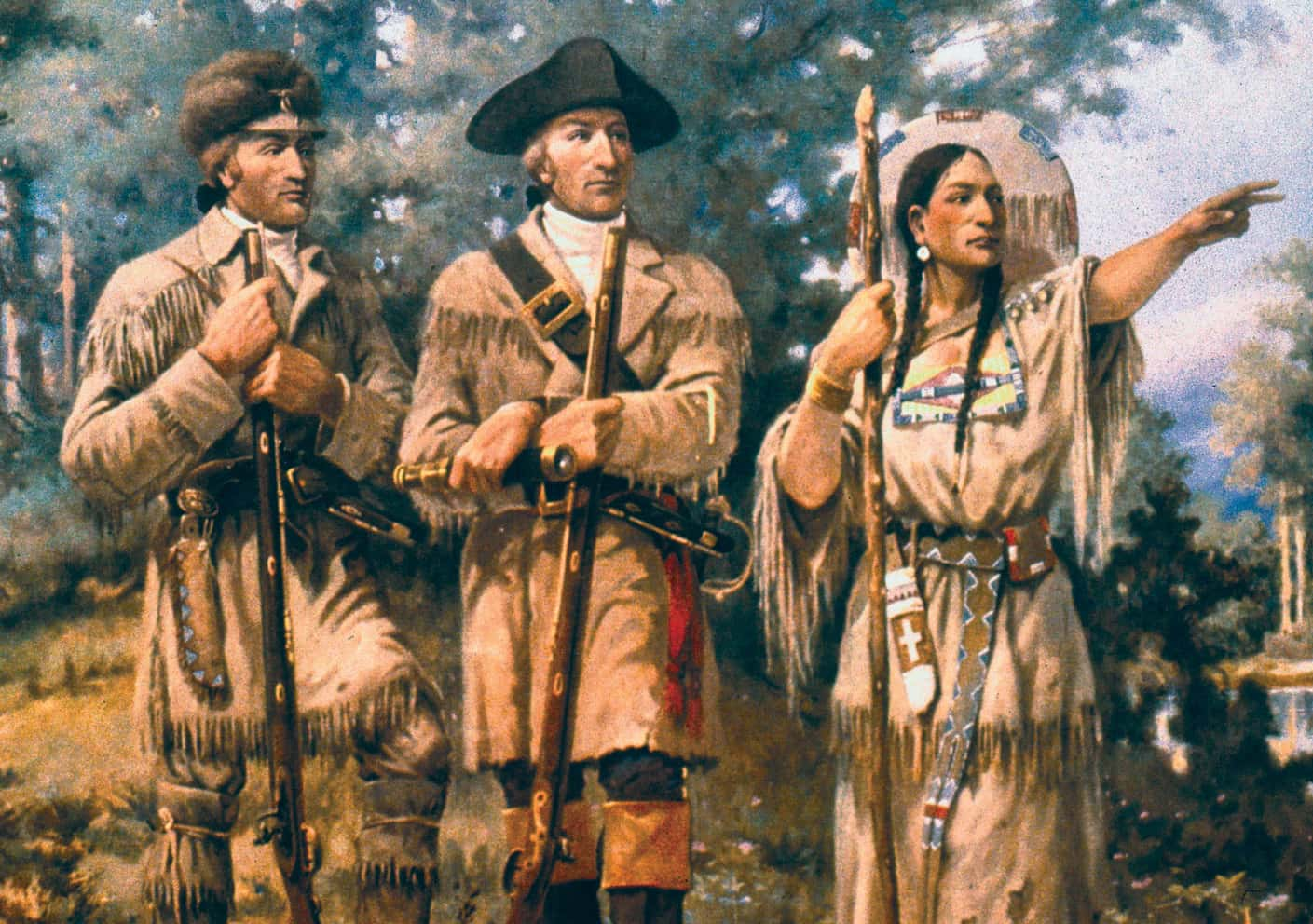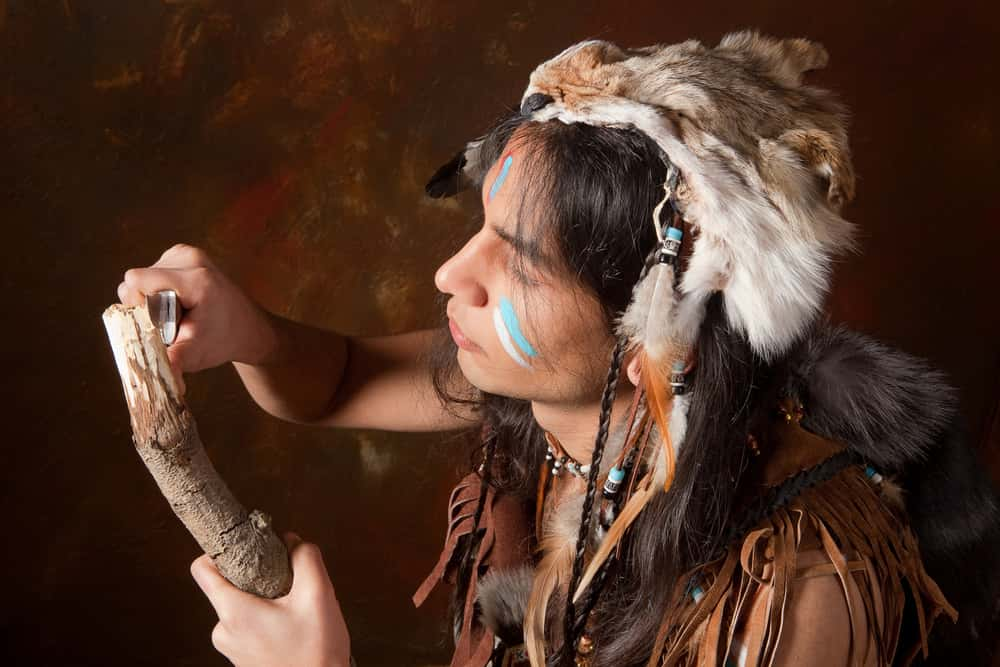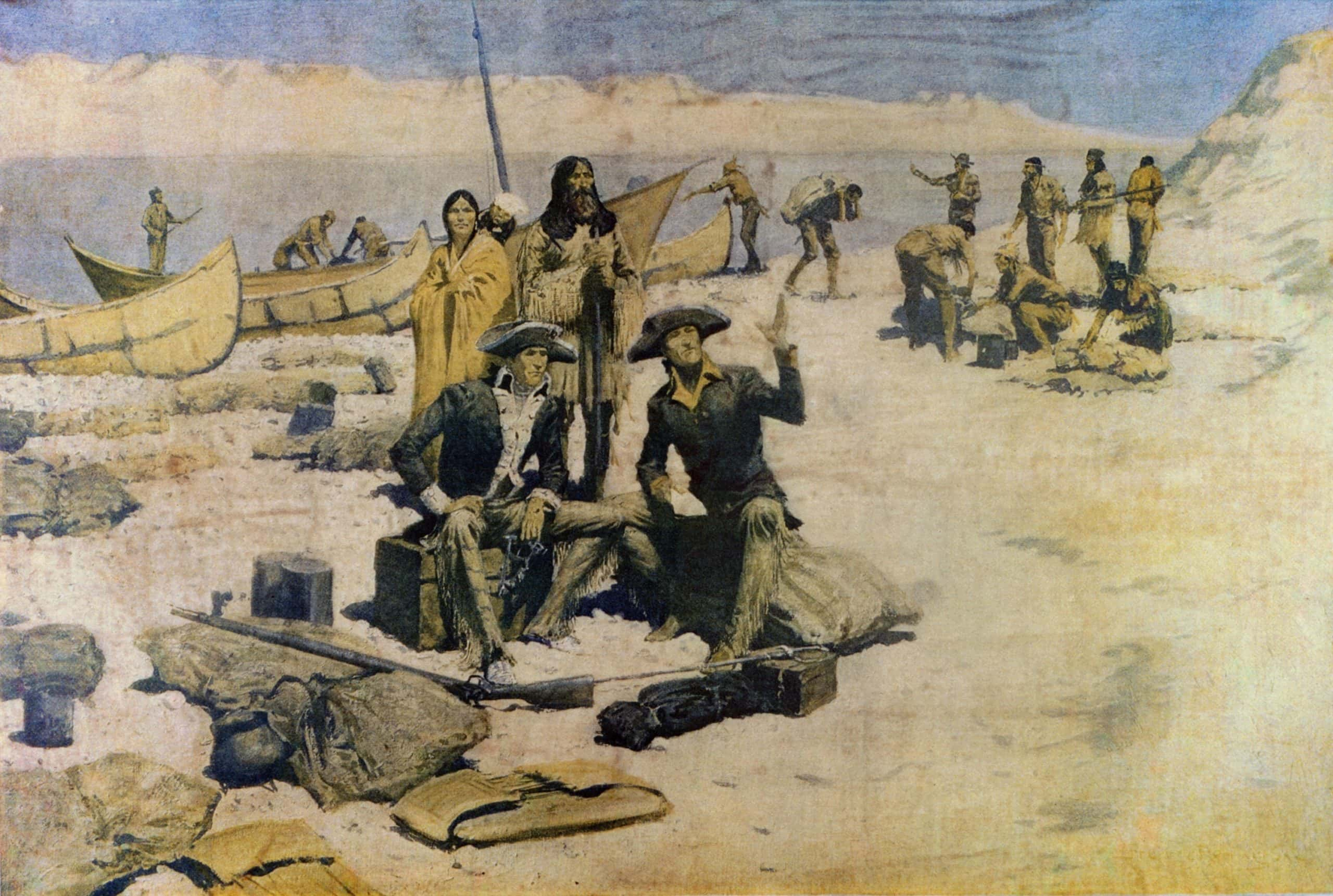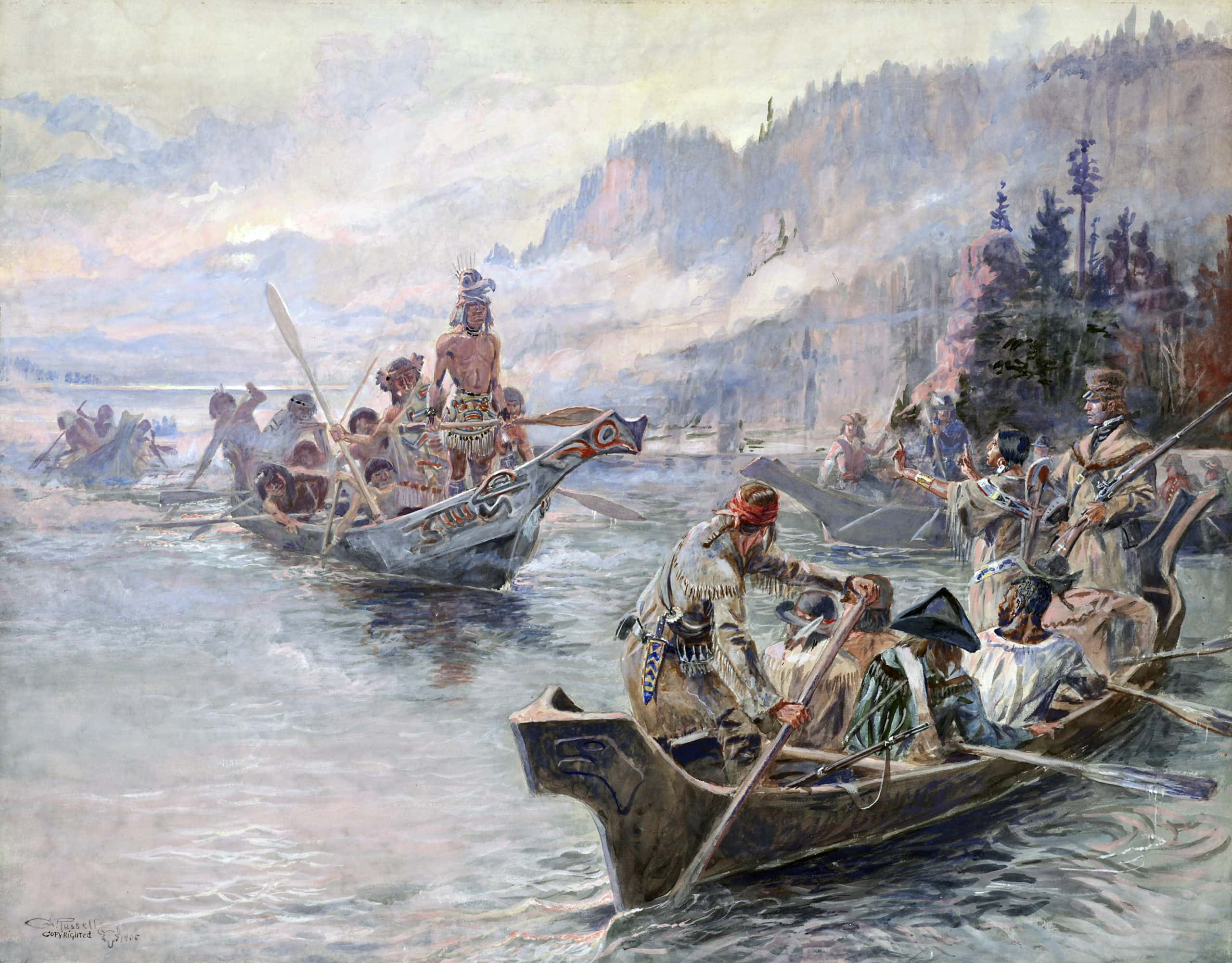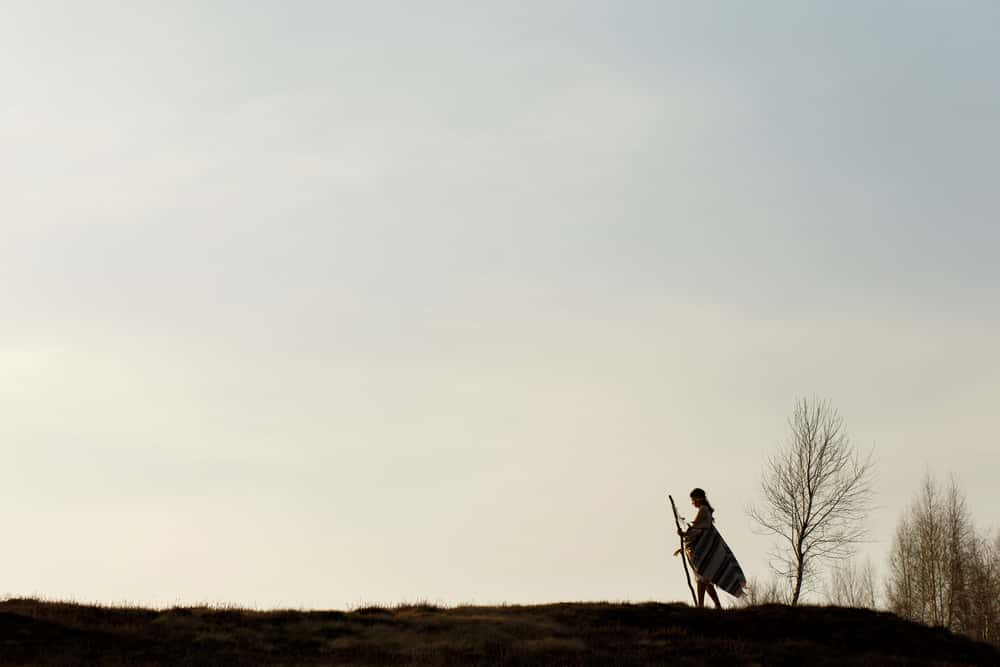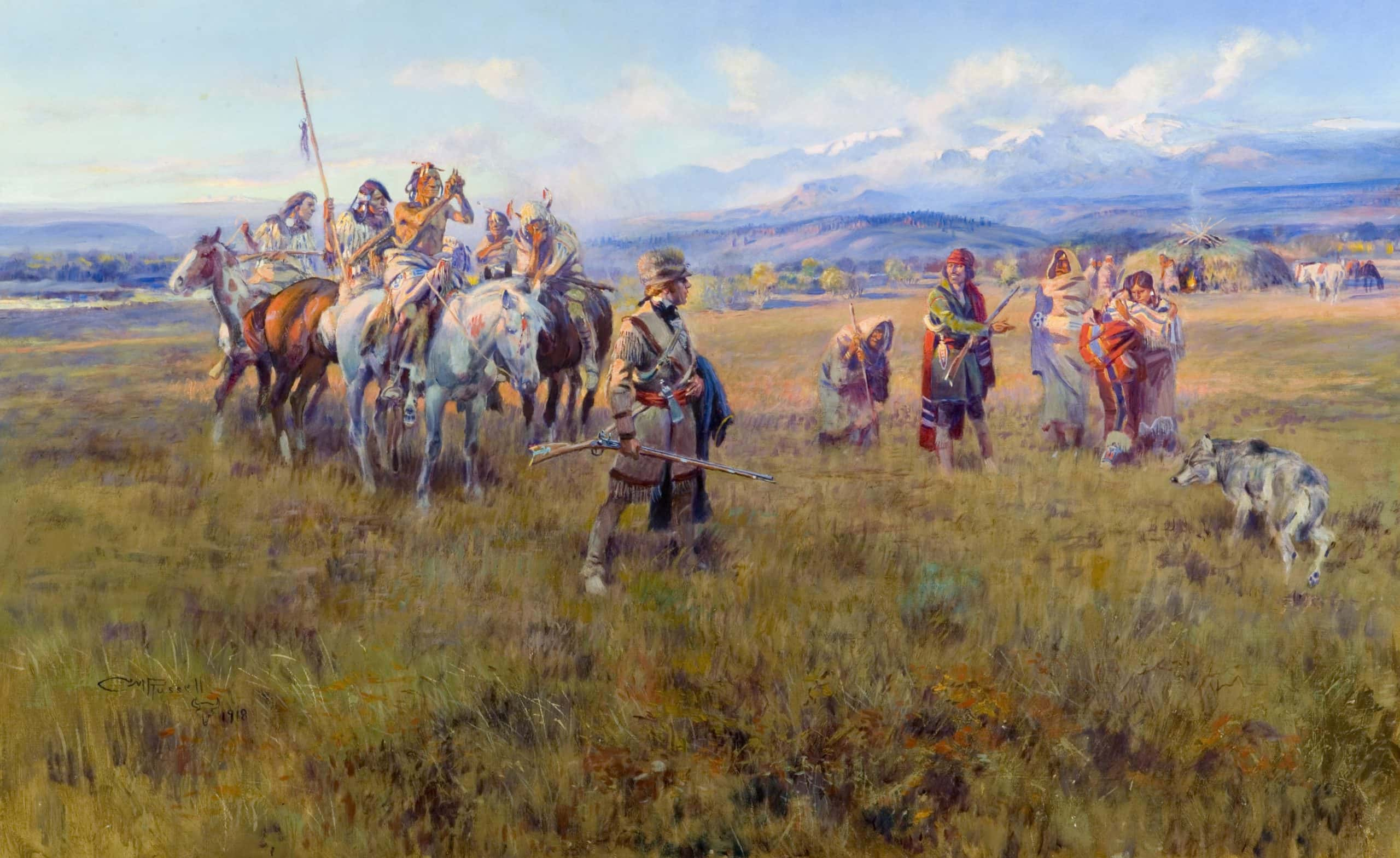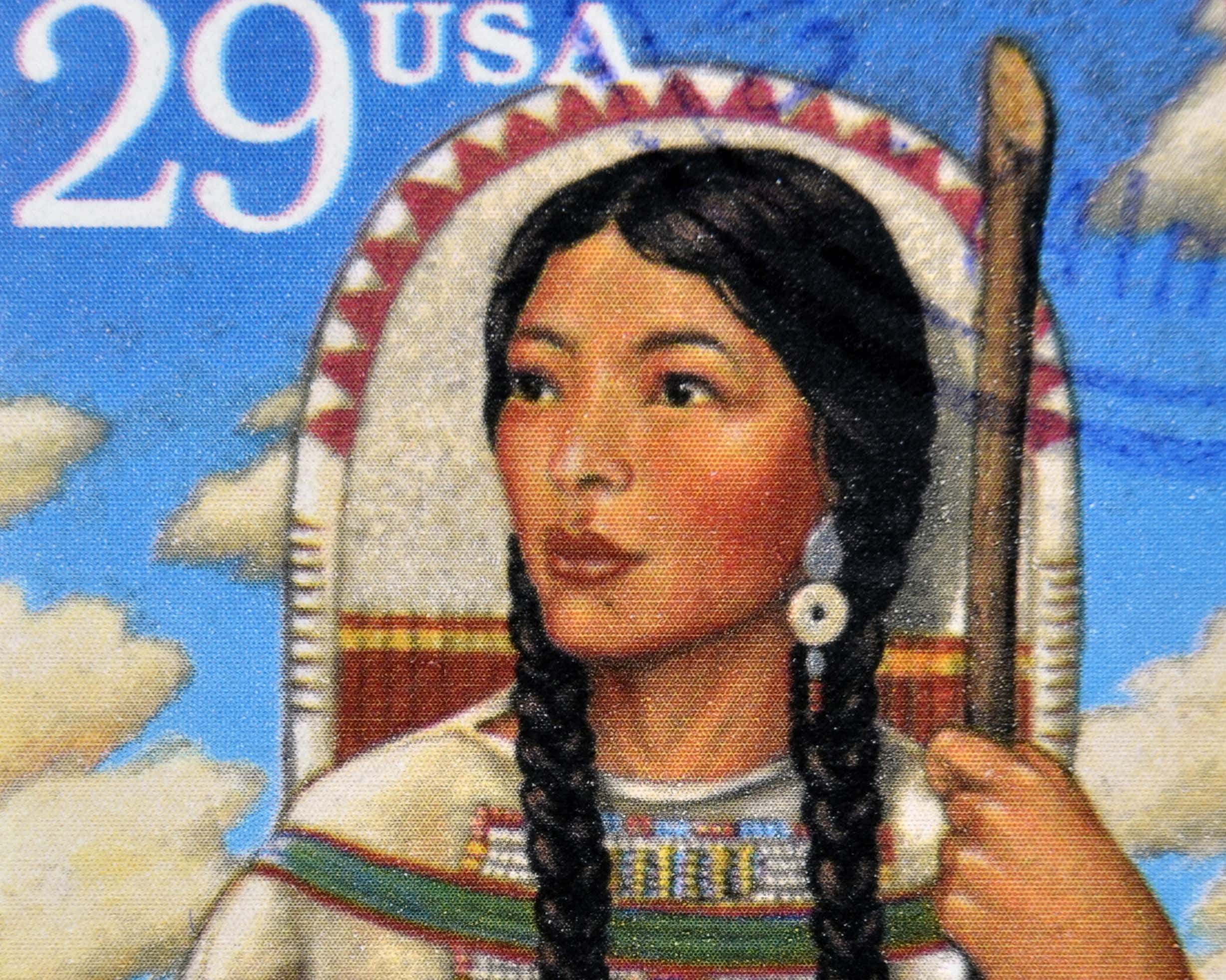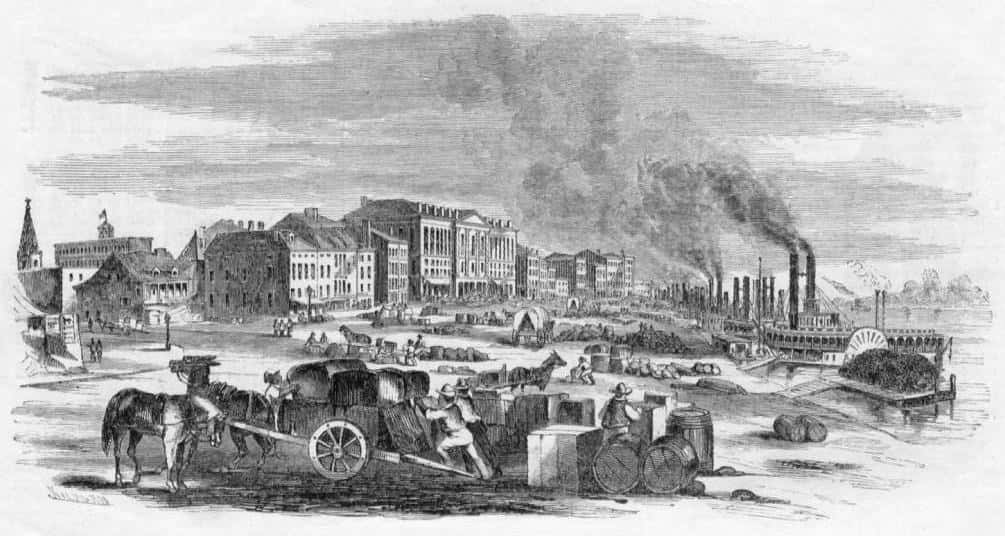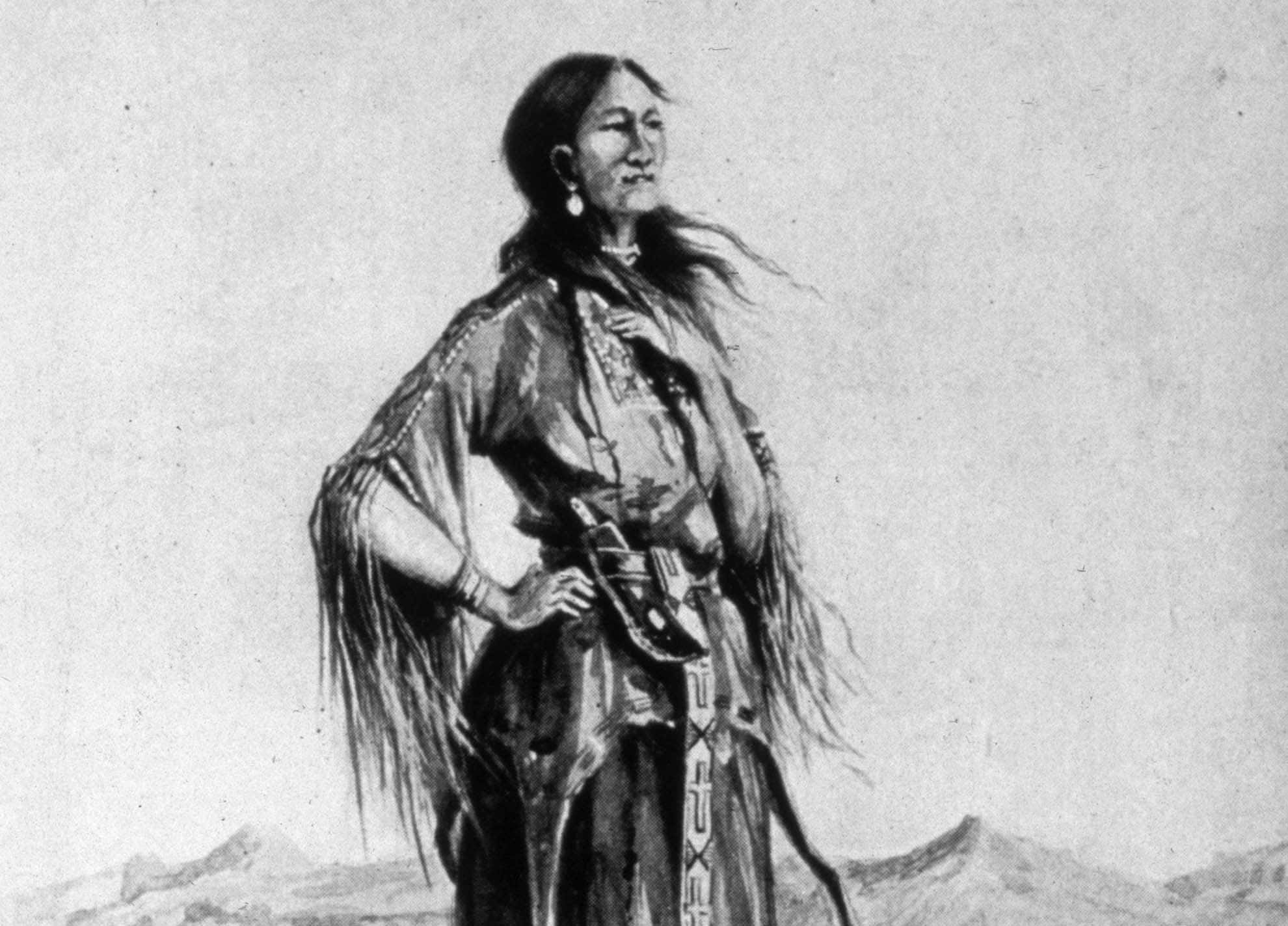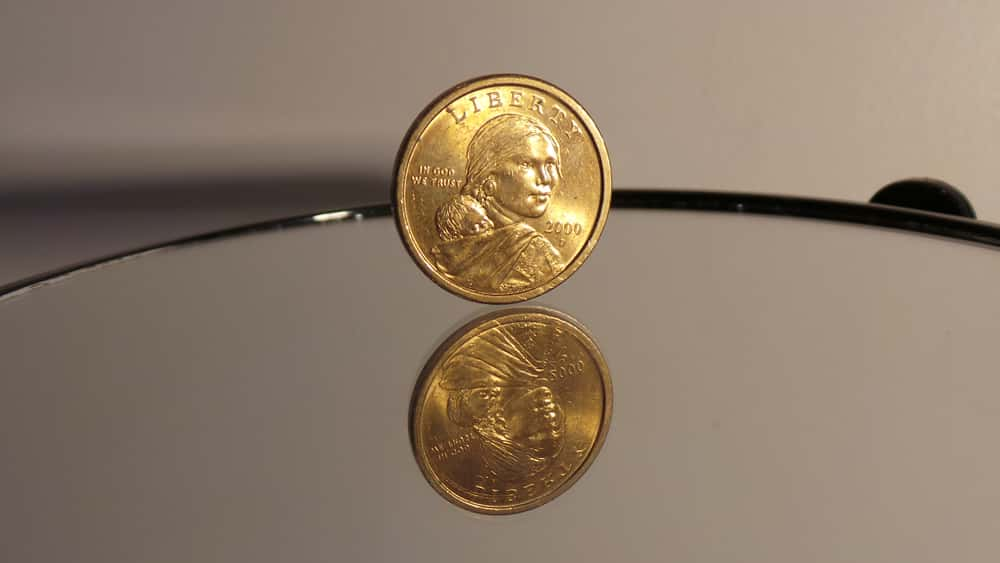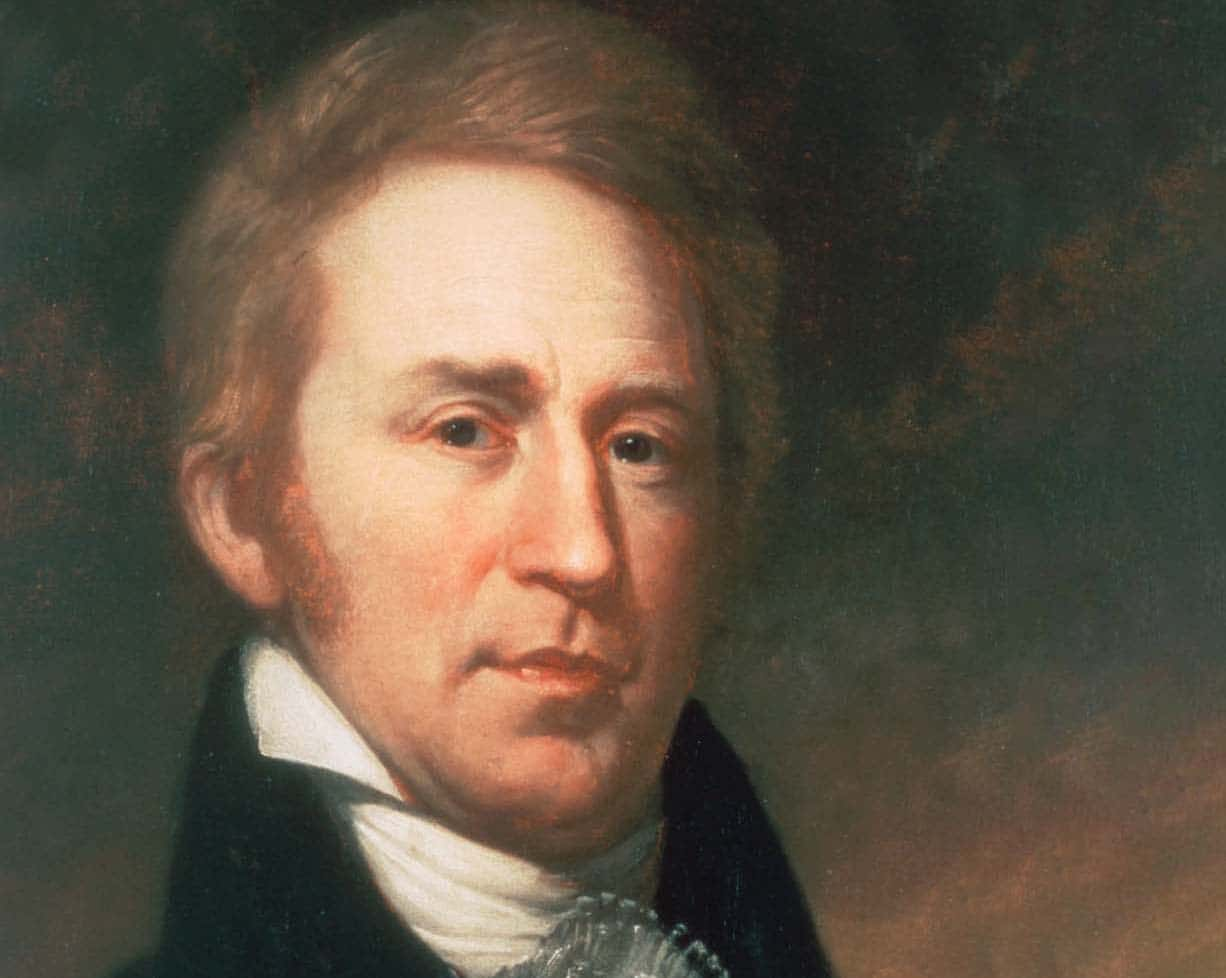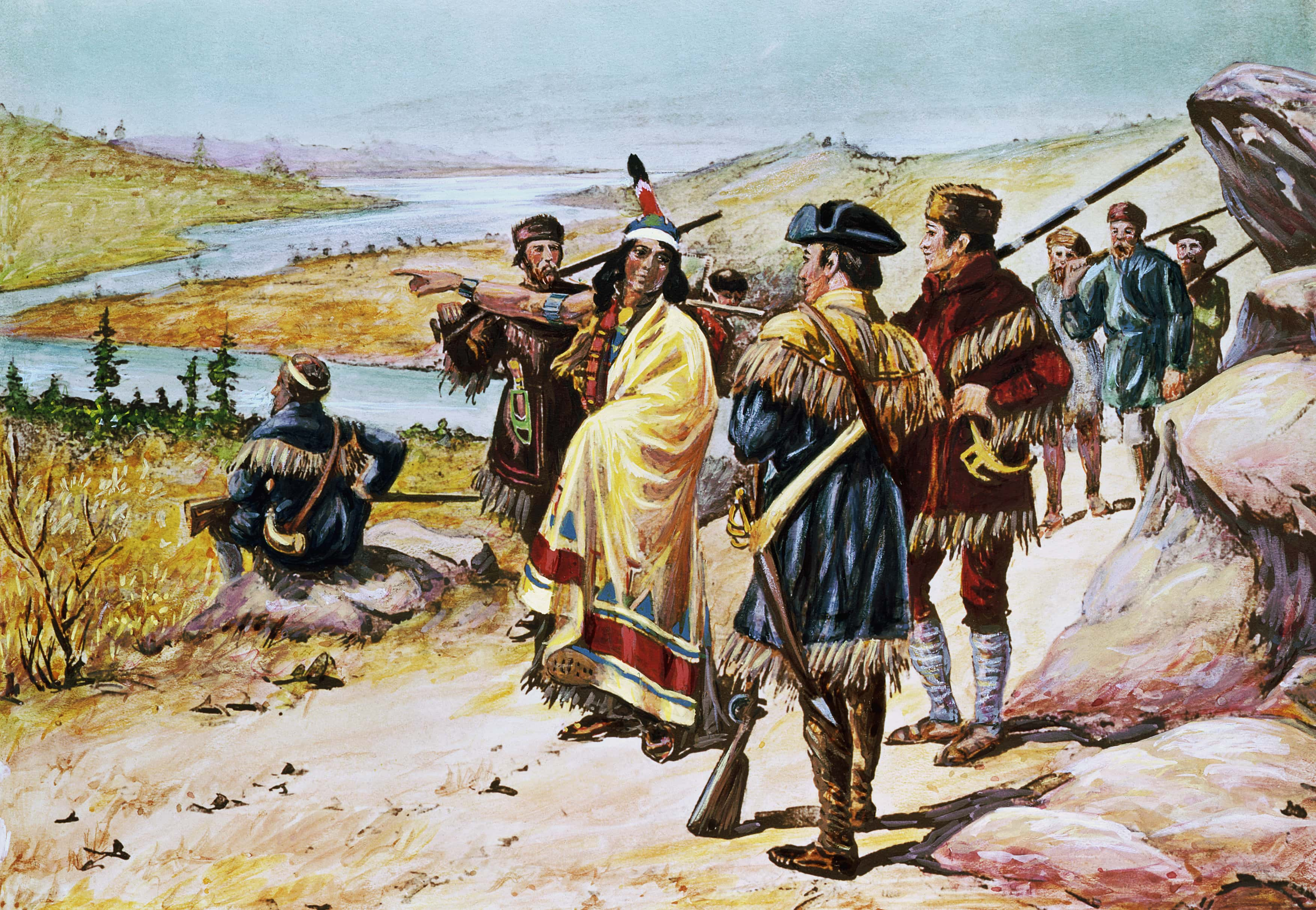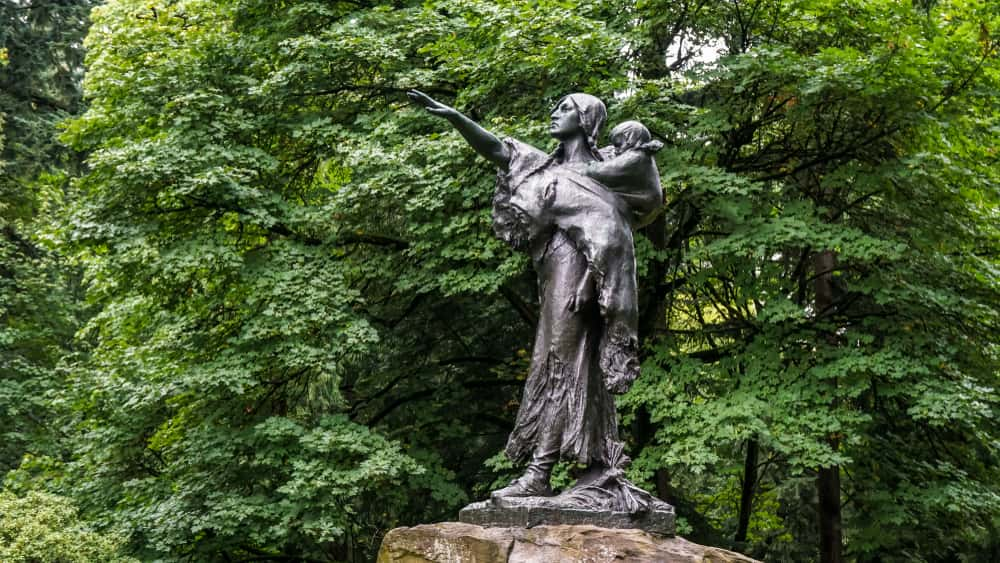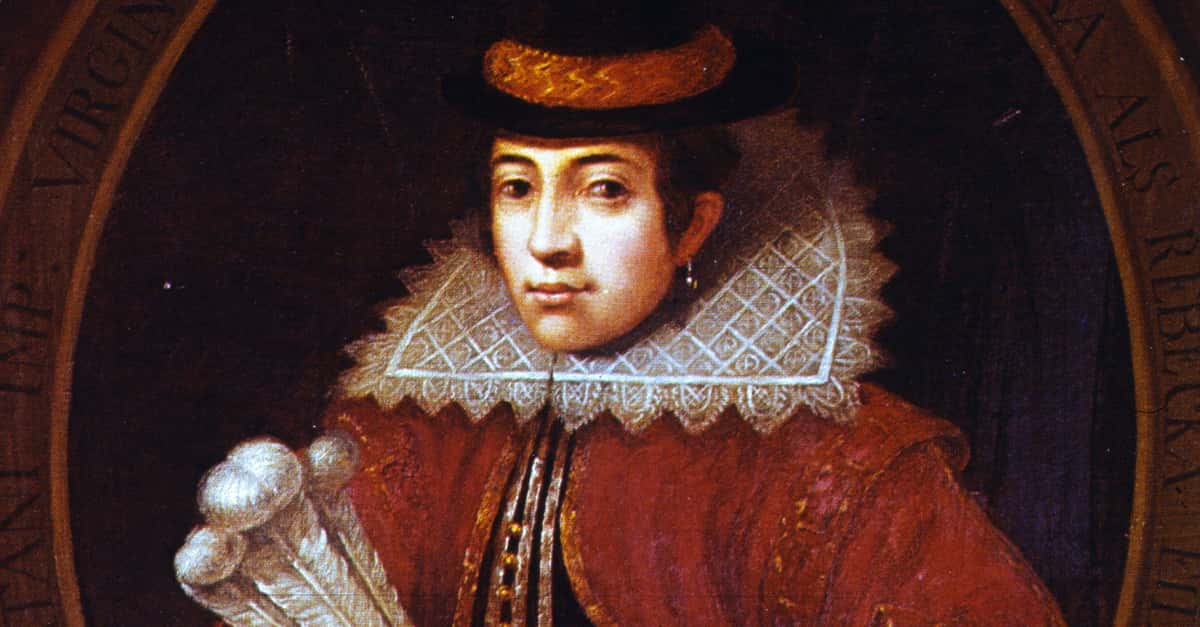Sacagawea Facts
Sacagawea was one tough lady. When she was a teenage mom, this Shoshone explorer tied her baby to her back and fearlessly travelled westward across America as part of Lewis and Clark’s famous expedition. For most people, that’s pretty much the beginning and end of Sacagawea’s story—but they’d be wrong. From her perilous childhood to her nightmare of a marriage, there’s so much more to know about this Indigenous icon.
1. Her Childhood Was Hard
In 1788, an extraordinary young girl took her first breaths. Her name was Sacagawea and, as part of what we now know as the Shoshone tribe, she lived in the mountainous terrain in the border of Montana and Idaho. From there, though, we don’t know much about Sacagawea’s early years. When there is information, it’s, uh, pretty dang dark. Buckle up and here we go.
2. Enemies Attacked Her People
Welp, there’s no other way to say it: Sacagawea’s childhood was BAD. An enemy tribe, the Hidatsa, viciously attacked her people when she was still very young. During the brutal raid, the Hidatsa ended the lives of four men, four women, and several boys. Up to this point, Sacagawea somehow managed to survive the attack—but our heroine wasn’t out of danger just yet.
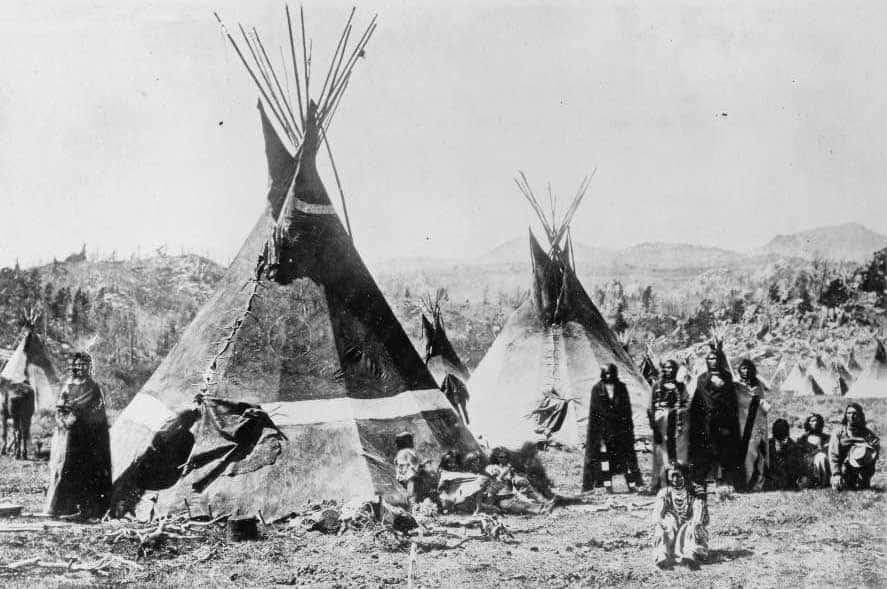 Wikipedia
Wikipedia
3. She Tried To Escape
During the Hidatsa raid, Sacagawea watched the carnage unfold in horror. It was fight or flight time and, fair enough for a young girl, Sacagawea figured that running away was her best shot at getting out of there alive. She banded together with a few of her tribespeople and attempted to flee by crossing the Priori river—but sadly, fate had other ideas.
 Sacagawea (2003), Questar Entertainment
Sacagawea (2003), Questar Entertainment
4. She Was Captured
As Sacagawea and her friends reached the middle of the river, the Hidatsa began to close in on them. Weakened and terrified, Sacagawea realized that she wouldn’t escape the tribe (history, give this poor girl a break!). The enemy tribe abducted her and carted her off to their lands...where her life went from bad to worse.
 Sacagawea (2003), Questar Entertainment
Sacagawea (2003), Questar Entertainment
5. Her Life Was Miserable
Despite Sacagawea’s young age, it doesn’t look like the Hidatsa went easy on their new hostage. In some versions of our heroine’s life story, the Hidatsa treated Sacagawea horribly during her captivity. She was little more than a servant for three long years. Then when she turned 16, everything changed—but not for the better.
 Sacagawea (2003), Questar Entertainment
Sacagawea (2003), Questar Entertainment
6. She Received An Awful “Gift”
It’s safe to say that Sacagawea had a not-so-sweet 16. After her birthday, her captors gave her the “present” of deciding that hey, their young captive was probably worth more as a teen bride than as an indentured servant. So they sold her off to a man named Toussaint Charbonneau. Spoiler: This new dude was very bad news.
 Sacagawea (2003), Questar Entertainment
Sacagawea (2003), Questar Entertainment
7. Her Husband Was Horrible
I think we can all agree that buying your bride isn’t the romantic “how we met” story that little girls dream about when they think about marriage. However, when it comes to Charbonneau, this guy decided to take “meet-ugly” to a whole ‘nother level. According to some sources, he didn’t even buy her; he won her by gambling. Swoon.
8. She Married A Stranger
Getting married to a stranger is never fun, but Sacagawea’s new hubby was a dang dumpster fire. See, before Charbonneau married our heroine, he had two claims to fame. First, he was a French-Canadian settler who had been sniffing around the Hidatsa village. Second, and much worse, he once tried to violently assault a woman. Great resume, Toussaint.
 Sacagawea (2003), Questar Entertainment
Sacagawea (2003), Questar Entertainment

History's most fascinating stories and darkest secrets, delivered to your inbox daily.
9. Her Husband Had A Dark Past
Look, history can sometimes be hard to recover. So how do we know about Charbonneau’s bad behavior? The reason is *chef’s kiss* perfect. The young lady’s mother saw Charbonneau midway through his attack. Like a true baller, she stabbed him and screamed at him to get away from her daughter. Yup, a mom beat up Charbonneau.
10. He Was Cruel
Here’s another funny thing about history. Back in the day, people tended to like and trust men more than women (crazy, I know!). So even though we had a white guy going up against a woman, sources from the time say that Charbonneau “deserved the fate” because his attack was so “brutal.” This is the man Sacagewea is marrying and all I can say is YIKES.
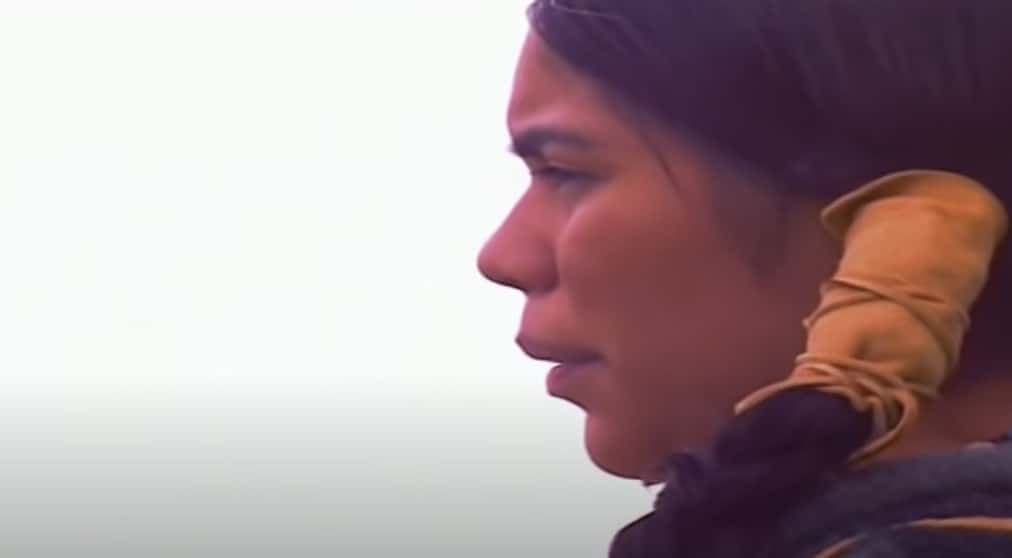 Sacagawea (2003), Questar Entertainment
Sacagawea (2003), Questar Entertainment
11. Her Husband Was Worse Than You Can Imagine
When it comes to Toussaint Charbonneau, the bad news just doesn’t stop. Guess what Sacagawea’s new husband did for a living? According to some sources, he sold women into slavery. Now, while that delightful tidbit isn't 100% verified, I think it's safe to say that this King Idiot wasn't above doing very nasty things to people. And he had more up his sleeve.
 Sacagawea (2003), Questar Entertainment
Sacagawea (2003), Questar Entertainment
12. She Had Competition
Clearly, no one was devoted to the jerk lifestyle quite like Charbonneau, so it shouldn’t surprise you to learn that he came with significant baggage. Sacagawea wasn’t actually her new hubby’s first wife, or—to be exact—his only wife. You see, when Charbonneau married our heroine, he was already married to another woman from the Shoshone nation.
 Lewis & Clark: Great Journey West (2002), National Geographic Television
Lewis & Clark: Great Journey West (2002), National Geographic Television
13. It Was A Dicey Match
Oh, and as though all that isn’t bad enough, Charbonneau was also THIRTY years older than Sacagawea when they tied the knot. So here we have an able, young Sacagawea ready to take on the world, and colonialism has really dealt her a bum hand. But in Kelly Clarkson's immortal words, what doesn't kill you makes you stronger...and Sacagawea had something big on the horizon.
 Sacagawea (2003), Questar Entertainment
Sacagawea (2003), Questar Entertainment
14. She Met Two Men Who Would Change Her Life
In November of 1804, shortly after her horror story of a wedding, Sacagawea met two men who would change her life forever: the cartographers and explorers Captain Meriwether Lewis and Captain William Clark. At first, their arrival might have seemed like a big yawn. Yet little did she know, they would kick-start her incredible adventure.
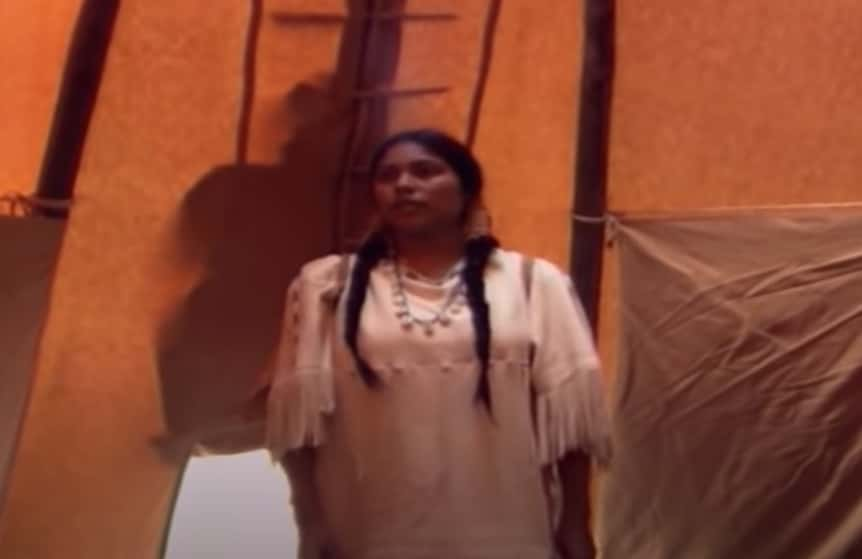 Sacagawea (2003), Questar Entertainment
Sacagawea (2003), Questar Entertainment
15. She Got An Incredible Job
Lewis and Clark were on a mission to explore America’s newly-acquired lands and create a map of the territories gained in the Louisiana Purchase. However, their team wasn’t quite complete. The men needed Indigenous guides and interpreters to help them map the continent (and also low-key look for creatures like honest-to-god mastodons).
Since Sacagawea spoke Shoshone, the language of many of the tribes where they were going, she was the perfect gal for the job.
 Lewis & Clark: Great Journey West (2002), National Geographic Television
Lewis & Clark: Great Journey West (2002), National Geographic Television
16. They Didn’t Like Her Husband
Look, I’m never gonna pass up an opportunity to get in a dig at Charbonneau. In a very satisfying development, Lewis and Clark didn't think much of Toussaint. Instead, the person who they really liked was his wife: Since Sacagawea spoke Shoshone fluently, they pretty much only took Charbonneau along because of her. Suck it, Toussaint!
17. There Was A Catch
So everything is coming up Sacagawea. However, there was just one catch: She was heavily pregnant at the time. Mere months before the journey began, Sacagawea gave birth to her first child, a baby boy named Jean Baptiste Charbonneau. In a heavy metal detail, Sacagawea continually ate crushed rattlesnakes during her labor.
At the time, people thought it would speed up the birth. Nowadays, it’s just proof that Sacagawea was a fighter from the start.
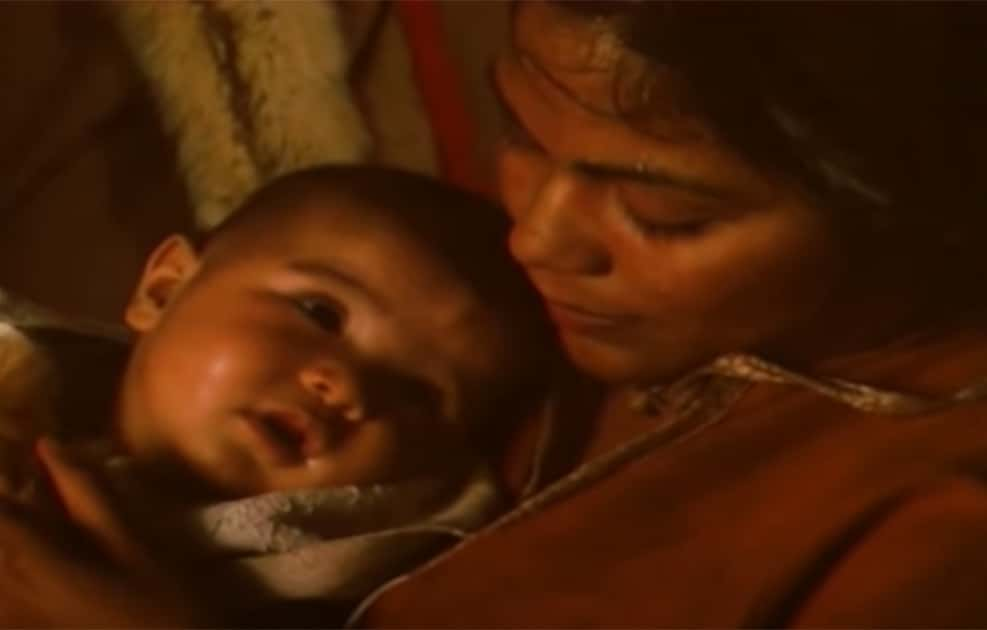 Sacagawea (2003), Questar Entertainment
Sacagawea (2003), Questar Entertainment
18. She Was Tough
While most new mothers would take it easy, Sacagawea was the exception, not the rule. Just weeks after giving birth, Sacagawea set out with Lewis and Clark. The perilous trek began on April 1805, and while everyone knew it would be a hard journey, Sacagawea had it especially rough. She was a new mom and she had to carry a newborn baby on her back. Our girl was tough!
 Lewis & Clark: Great Journey West (2002), National Geographic Television
Lewis & Clark: Great Journey West (2002), National Geographic Television
19. She Made It Possible
Sacagawea was incredibly important to the journey, but so was her little baby Jean Baptiste. Clark immediately developed a soft spot for the boy, nicknaming him “Little Pomp” or “Pompy” because of the way he’d dance. And Jean Baptiste wasn’t just cute—he was helpful too. His presence immediately put other tribes at ease and assured them that the expedition was just here to map and travel, not to harm.
 Lewis & Clark: Great Journey West (2002), National Geographic Television
Lewis & Clark: Great Journey West (2002), National Geographic Television
20. She Earned Her Keep
Our girl more than earned her keep on the journey. She interpreted between the explorers and other Indigenous tribes, along with cooking, foraging, cleaning, making herbal medicines, and basically keeping everything running smoothly. In summary, Sacagawea made everything look easy. But soon, she’d encounter something so chilling that it shook even her composure.
 Lewis & Clark: Great Journey West (2002), National Geographic Television
Lewis & Clark: Great Journey West (2002), National Geographic Television
21. She Made A Chilling Discovery
While on the journey, Sacagawea underwent a heartbreaking realization. As she approached familiar-looking terrain, she realized that she knew this place. It was the land where the Hidatsa abducted her all those years ago. Though it’s not as well-known as other parts of Sacagawea’s story, her reaction to this traumatic place was tragic.
 Lewis & Clark: Great Journey West (2002), National Geographic Television
Lewis & Clark: Great Journey West (2002), National Geographic Television
22. She Burst Into Tears
This one really hurts. As a sign of how tough Sacagawea had become throughout her life, she didn’t even cry when she recognized such a monumentally important place. Instead, she simply went blank and seemed numb to her own emotional realization. Unfortunately for Sacagawea, this was far from the only tough moment on the journey.
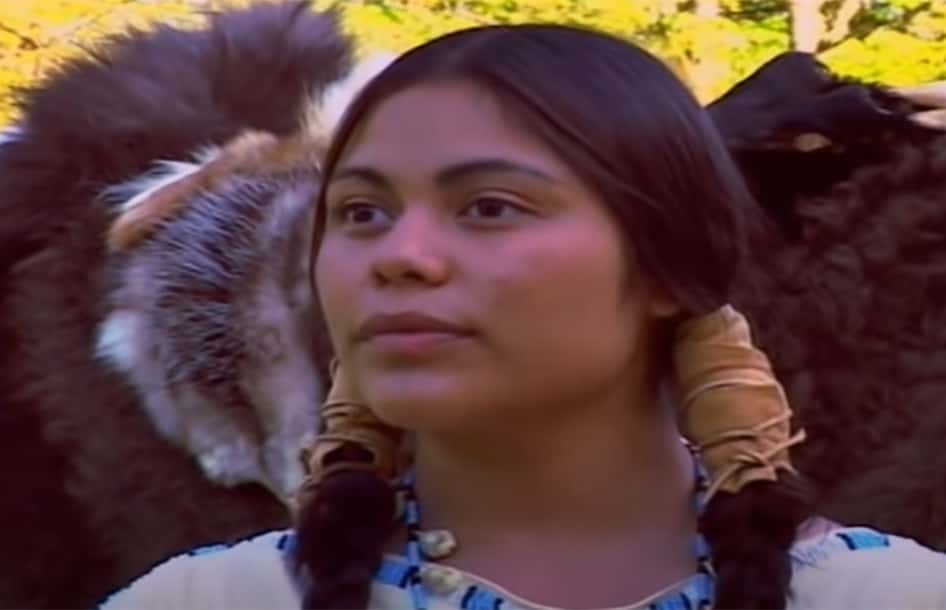 Sacagawea (2003), Questar Entertainment
Sacagawea (2003), Questar Entertainment
23. She Saved The Day
On May 14, 1805, the expedition hit a snag. Sacagawea’s husband was steering one of the boats when a gale of wind suddenly disrupted the voyage. Charbonneau became so scared that, in a panic, he nearly overturned the entire boat. What a guy. Thankfully, our heroine Sacagawea sprang into action and saved the day...
24. She Was Fearless
This is one of the more famous Sacagawea-related moments in Lewis and Clark’s journals. While her loser-hubby got scared of some wind and was praying to God, valuable papers and much-needed equipment tumbled overboard. As Charbonneau sat paralyzed by fear, Sacagawea bravely dove into the water and rescued the documents and tools. Sacagawea gets stuff done!
 Lewis & Clark: Great Journey West (2002), National Geographic Television
Lewis & Clark: Great Journey West (2002), National Geographic Television
25. Her Husband Was A Coward
It’s time for everyone’s favorite thing: More insults for Toussaint Charbonneau! After Sacagawea’s husband nearly lost the expedition’s important papers and items, William Lewis wrote that Charbonneau was, and I quote, "a man of no peculiar merit." He also added that Charbonneau was “the most timid waterman in the world.” I love to read it.
 Lewis & Clark: Great Journey West (2002), National Geographic Television
Lewis & Clark: Great Journey West (2002), National Geographic Television
26. She Suffered
But at the end of the day, Charbonneau was no joke. He made Sacagawea’s life miserable, as we know from a chilling passage in the explorers' journals. A month after she saved the expedition’s documents, Sacagawea fell dangerously ill and went “out of her senses.” Historians now believe that she had gonorrhea—contracted from, you guessed it, her no-good husband.
27. Everyone Knew The Truth
The rest of the expedition noticed Sacagawea’s illness—and Charbonneau’s role in it. Clark felt so unimpressed by Charbonneau’s behavior during his wife’s frequent illnesses that he threw some major shade in his journal. Clark wrote, “If she dies, it will be the fault of her husband, as I am now convinced.” Just telling it like it is.
 Lewis & Clark: Great Journey West (2002), National Geographic Television
Lewis & Clark: Great Journey West (2002), National Geographic Television
28. She Made It Through
Thankfully, Sacagawea managed to recover enough to continue the journey. But shortly after they hit the road, our heroine entered another tough time. You see, at this phase of the expedition, Lewis and Clark’s crew actually reached Sacagawea’s old home with the Shoshone people. The last time she encountered a place from her past, Sacagawea kept her emotions to herself. But this time, they came rushing out.
 Lewis & Clark: Great Journey West (2002), National Geographic Television
Lewis & Clark: Great Journey West (2002), National Geographic Television
29. She Couldn’t Hide
When Sacagawea realized that she was back in her childhood home, her stony reserve finally broke. She sang and danced in joy, startling the other travelers, who knew Sacagawea as someone who controlled her emotions. What’s more, the land wasn’t the only thing Sacagawea recognized. While there, she also met people from her past.
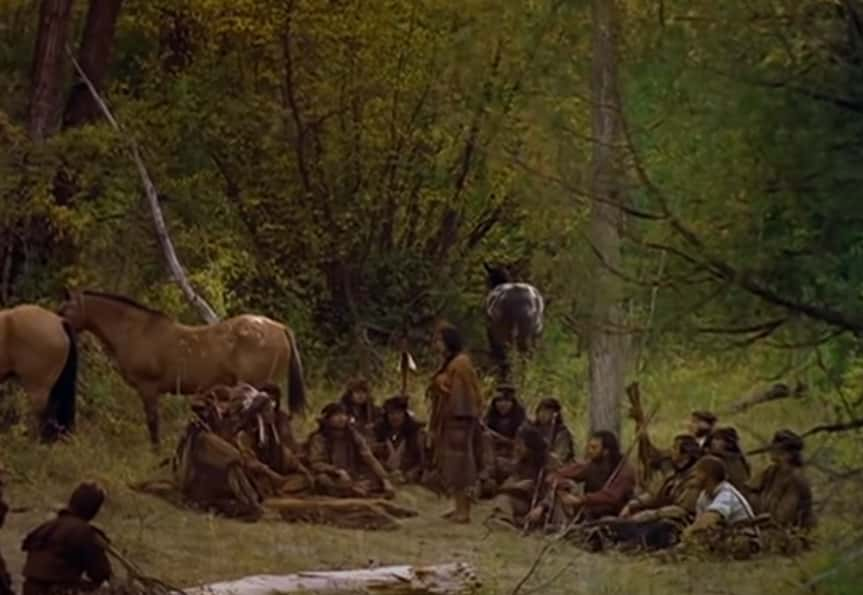 Lewis & Clark: Great Journey West (2002), National Geographic Television
Lewis & Clark: Great Journey West (2002), National Geographic Television
30. She Met A Face From Her Past
While she was in her childhood homeland, Sacagawea met a girl who lived out another version of her life. Like Sacagawea, this woman had been one of the unlucky girls who were abducted by a rival tribe. However, unlike Sacagawea, she had managed to escape and even returned home to the Shoshone. Sacagawea must have experienced incredibly mixed emotions as she heard about the life she could have had.
But the next familiar face was even more shocking.
31. She Had A Heartbreaking Reunion
When meeting the chief, Sacagawea was encountering another old friend: It was her own brother, Chief Cameahwait. When she saw him, Clark says that Sacagawea “danced for the joyful sight” and Lewis notes that he found the family reunion to be “really affecting”—AKA 19th-century speak for “I totally teared up.” And honestly, who wouldn’t?
However, another version of this story is more heartbreaking than joyous.
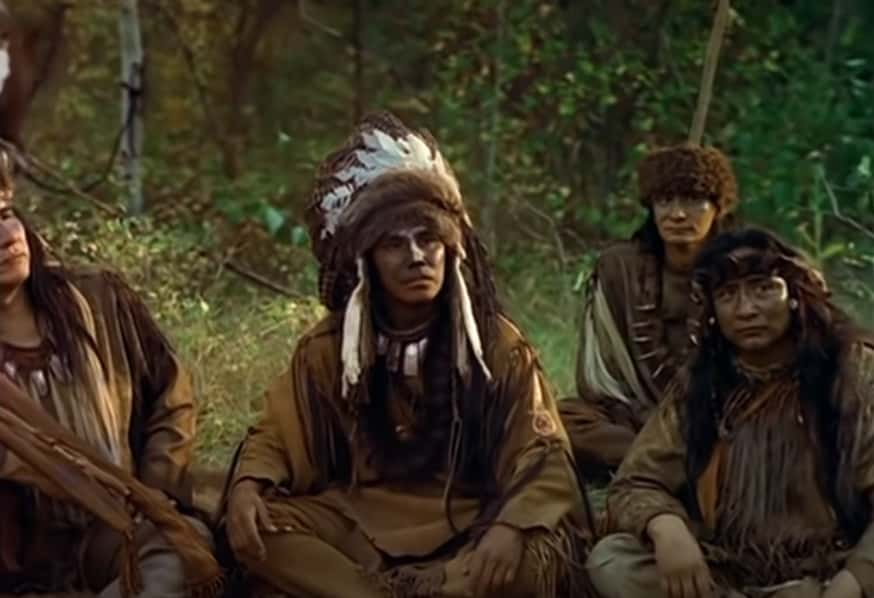 Lewis & Clark: Great Journey West (2002), National Geographic Television
Lewis & Clark: Great Journey West (2002), National Geographic Television
32. She Broke Down
Another diary entry provides more details about Sacagawea’s surprise reunion with her long-lost brother. When Sacagawea realized that the chief was her sibling, she immediately threw her blanket over him as a sign of affection and began to cry. The siblings talked privately and for the rest of the night, Sacagawea couldn’t help but keep bursting into tears.
 Lewis & Clark: Great Journey West (2002), National Geographic Television
Lewis & Clark: Great Journey West (2002), National Geographic Television
33. An Old Flame Reappeared
In some versions of this story, Sacagawea also met the man that she should have married. You see, when Sacagawea was very young, her family promised her to a fellow tribesman. Sadly, her old betrothed didn’t exactly step up when his fiancée returned home. He took one look at Sacagawea’s burly husband and made it clear that he wasn’t about to fight for his ex. Boo to this man!
34. Her Husband Attacked Her
By August of 1805, Charbonneau levelled down from “Horrible Husband” to “Truly Abysmal Human Being.” During dinner, he decided to beat Sacagawea so brutally that even though Clark tried to stay out of his staff’s personal lives, he simply could not stand by and watch Charbonneau terrorize his wife. He stepped in and demanded that Charbonneau stop attacking Sacagawea.
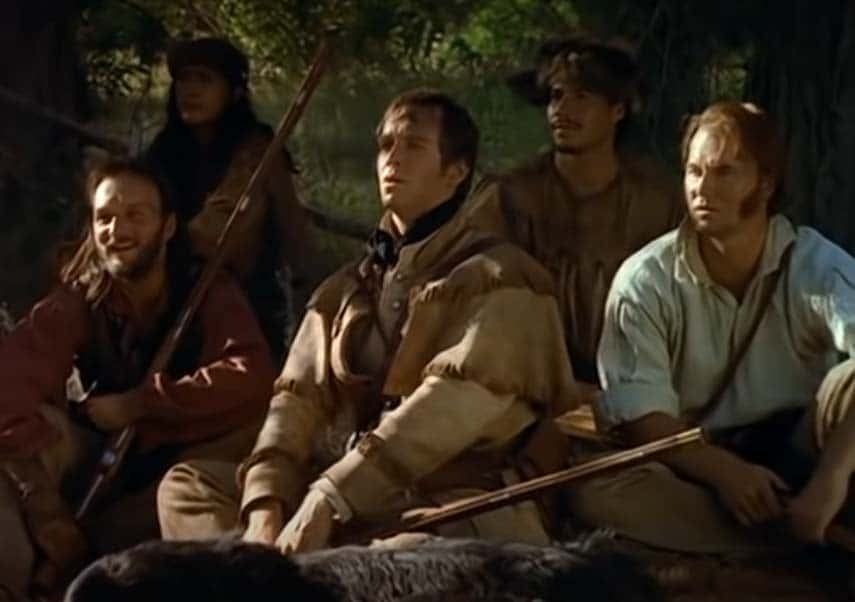 Lewis & Clark: Great Journey West (2002), National Geographic Television
Lewis & Clark: Great Journey West (2002), National Geographic Television
35. She Hit Rock Bottom
In the autumn of 1805, the journey across America officially hit rock bottom. Lewis and Clark’s surroundings were so bare that even Sacagawea, who could normally find food in any environment, came back empty-handed. In the end, the travellers were so hungry that they ate bear fat in an attempt to survive. It worked—but still, sounds gross.
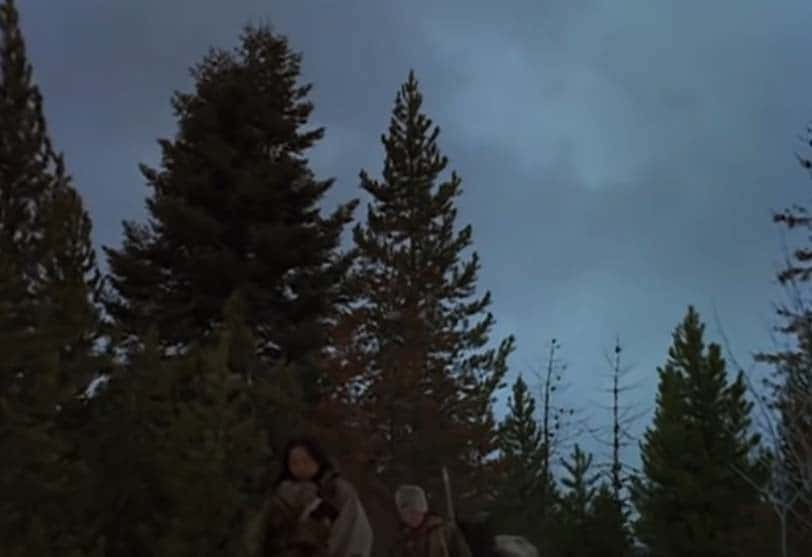 Lewis & Clark: Great Journey West (2002), National Geographic Television
Lewis & Clark: Great Journey West (2002), National Geographic Television
36. She Was A Fighter
Despite the perilousness of the journey, Lewis and Clark consistently described Sacagawea as one heck of a woman. She was, according to the two settlers, “plucky and determined” as well as “intelligent, cheerful, resourceful, tireless, faithful.” Clark summed it up best when he declared that Sacagawea “inspired us.” She inspires me too, bud.
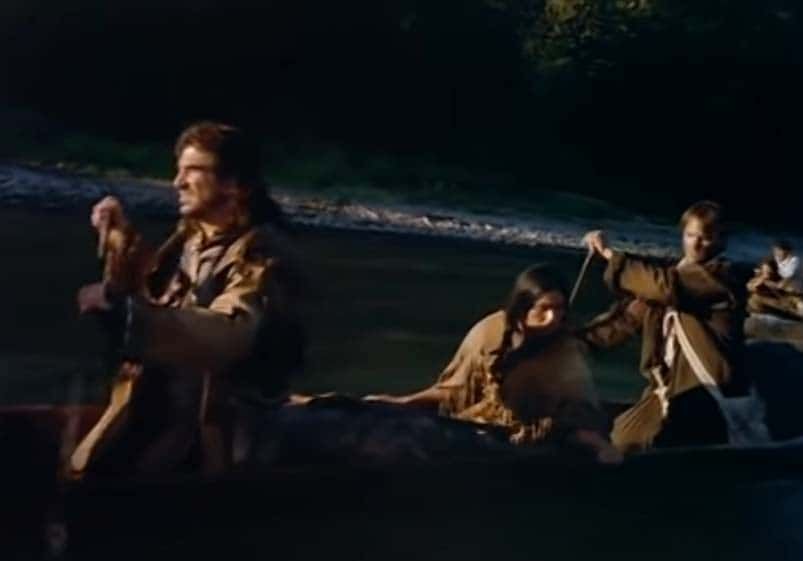 Lewis & Clark: Great Journey West (2002), National Geographic Television
Lewis & Clark: Great Journey West (2002), National Geographic Television
37. She Made One Demand
After a long and perilous journey, the travellers finally reached the west coast. Evidently, our girl Sacagawea felt thrilled. She didn’t make many demands during the expedition, but when she heard that a beached whale was on shore, she insisted to go and see it for herself. She marvelled at the “monstrous fish” and the beautiful Pacific ocean. Looking back, this was one of her last happy moments.
38. The Return Journey Was Horrible
Soon after Sacagawea breathed in the ocean air, she and the rest of Lewis and Clark’s expedition turned around. Unfortunately, their return journey did not go smoothly. For weeks, Sacagawea's son Pompy became “dangerously ill.” The entire expedition banded together to help the baby recover and thankfully, the little guy pulled through. He must have inherited his mother’s chutzpah.
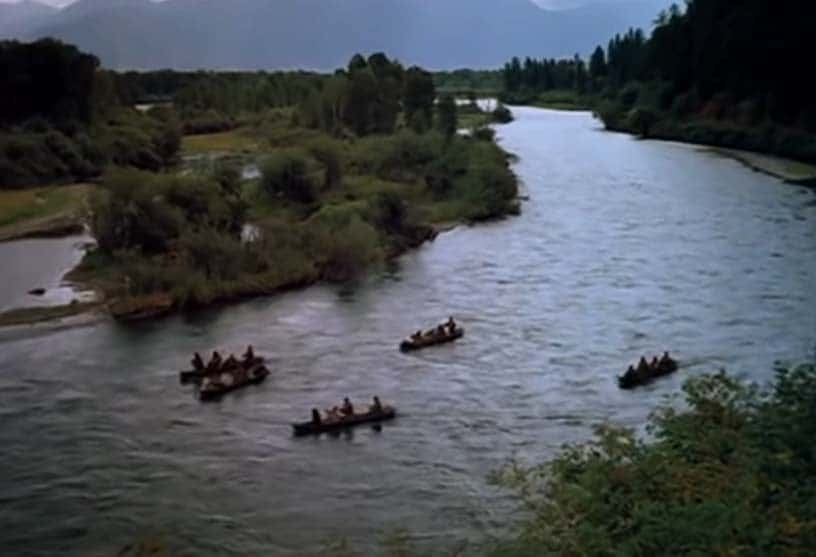 Lewis & Clark: Great Journey West (2002), National Geographic Television
Lewis & Clark: Great Journey West (2002), National Geographic Television
39. Her Son Was In Danger
Other than Little Pompy’s illness, the rest of the trip back was mercifully uneventful. By late 1806, more than a year after Sacagawea had first joined the explorers, it was finally time to go back home to the Hidatsa tribe. While we don’t know how Sacagawea felt about the journey ending, we do know that parting with Lewis and Clark was emotional. Clark had grown to love Sacagawea’s son so much that he even wanted to adopt him.
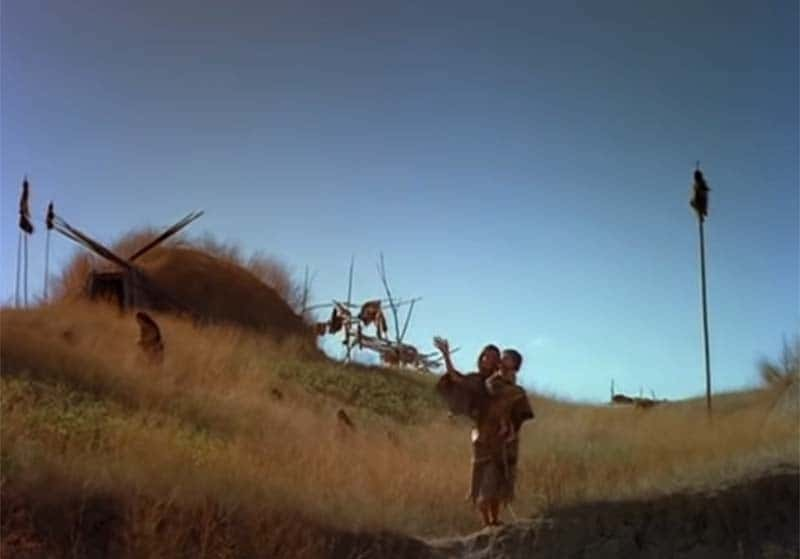 Lewis & Clark: Great Journey West (2002), National Geographic Television
Lewis & Clark: Great Journey West (2002), National Geographic Television
40. She Made A Big Change
Sacagawea and her lame-o husband lived with the Hidatsa for three years, before packing it all up and accepting Clark’s invitation to meet him in St. Louis, Missouri. The family settled in the city and tried to make it work, but at heart, it seems like both Sacagawea and Charbonneau preferred the wilderness. They prepared to leave St. Louis—but before they headed out, Sacagawea made a devastating choice.
41. She Said Goodbye
Sacagawea realized that with his wealth, social standing, and clear love for her son, William Clark could give little Pompy a better life than she could. In 1809, Sacagawea and her husband decided to let him take control of their son’s education and left Pompy with Clark back in St. Louis, where he attended school and eventually grew up to become a rascally explorer, just like his mama.
 Lewis & Clark: Great Journey West (2002), National Geographic Television
Lewis & Clark: Great Journey West (2002), National Geographic Television
42. She Had A Daughter
At this time, Sacagawea was carrying her second child and unfortunately, her pregnancy could not be harder. Our heroine was extremely ill and weak, but in true kick-butt Sacagawea fashion, she still managed to give birth to a little girl named Lizette in 1812. Sadly, Sacagawea wouldn’t get to know her daughter very well.
43. She Breathed Her Last
In December of 1812, Sacagawea became gravely ill, with historians blaming a “putrid fever” or perhaps typhus. Either way, the results were catastrophic. Despite toughing it out so many times in the past, this time Sacagawea couldn’t make it through. Sadly, our heroine passed on December 20, 1812. Sacagawea was just 24 years old.
Yet according to some historians, this isn’t the real ending of Sacagawea’s story.
44. Some Say She Survived
In the early 1900s, a scholar claimed that Sacagawea hadn’t passed of a fever and instead had lived until 1884 and passed in Wyoming. Over a century later, and after a lot of investigating, most historians don’t believe these claims. For the most part, people think that this was a different woman, now called the “Wind River Sacagawea.”
45. Her Daughter Had A Sad Fate
After losing his wife to illness and pretty much losing his son to William Clark, Sacagawea’s widower decided to throw in the towel and start over with a new family. Charbonneau accepted Clark’s offer to formally adopt both of his children, while he returned to his old fur-trading ways. While Pompy inherited his mom’s adventurous gene, little Lizette wasn’t so lucky. All we know is that she passed sometime during her childhood.
46. Her Husband Continued To Suck
So, did Sacagawea’s loss make our favorite guy, Toussaint Charbonneau, turn over a new leaf and stop treating women so horribly? Pfft, you know it didn’t. He continued to be a skeezy player and eventually married at least five different wives. Over time, he also brought new meaning to the line, “I love high school girls. I get older and they stay the same age.”
Charbonneau’s last marriage occurred when he was 70. Guess how old the bride was? 14.
47. She Is An Icon
Even death couldn’t stop Sacagawea’s story. After she passed, she became an American and Shoshone icon. As a tribute to her role in mapping the nation, Sacagawea’s face appeared on US currency. Even better, the river where she bravely saved important documents from the expedition is now “Sacagawea River.” Not bad girl, not bad at all.
48. She Had A Rumored Affair
One of the most famous aspects of Sacagawea’s story is her supposed love affair with William Clark. And hey, it’s easy to see why people thought they were endgame. Clark and Sacagawea clearly got along very well, with Clark nicknaming her Janey, saving her from her cruel husband, and adoring her baby son. So were they secretly a couple? Historians now believe they have a definitive answer.
49. We Know The Truth
Sorry, romantics. Most historians don’t believe that Clark and Sacagawea were secretly in love with each other. Instead, scholars think they had more of a doting uncle/beloved niece kind of relationship. They cared for each other very much—but when it came to longing glances and moonlit walks, not so much. But hey, there's always fanfiction...
50. Her Name Has A Perfect Meaning
How do you summarize someone like Sacagawea? Even though we know about her life thanks to journals by other people, we have no documents written by her. Because of this, it’s hard to get a handle on who she was and what she thought. But it seems fitting to end this article by reiterating our heroine’s need for exploration and adventure.
Depending on the translation, her name appropriately means “Boat Launcher" or “Bird Woman.” In both cases, seeing the world was part of Sacagawea’s destiny.
Sources: 1, 2, 3, 4, 5, 6, 7, 8, 9, 10, 11, 12, 13, 14, 15, 16, 17, 18

